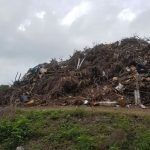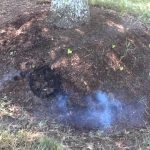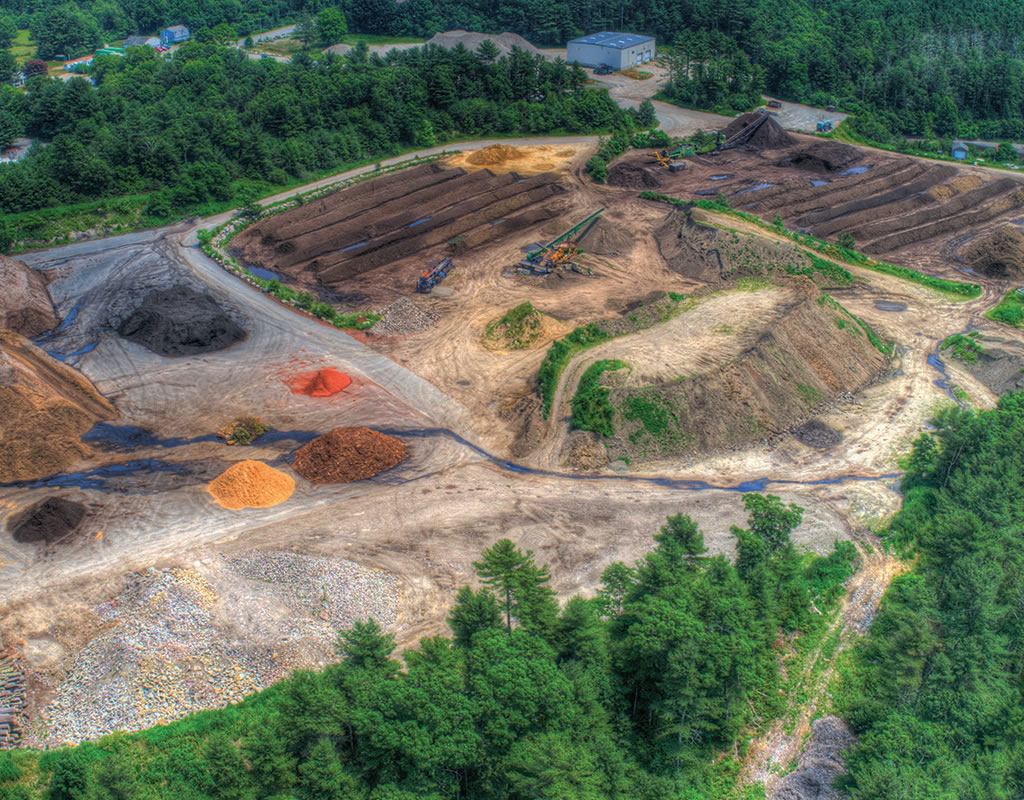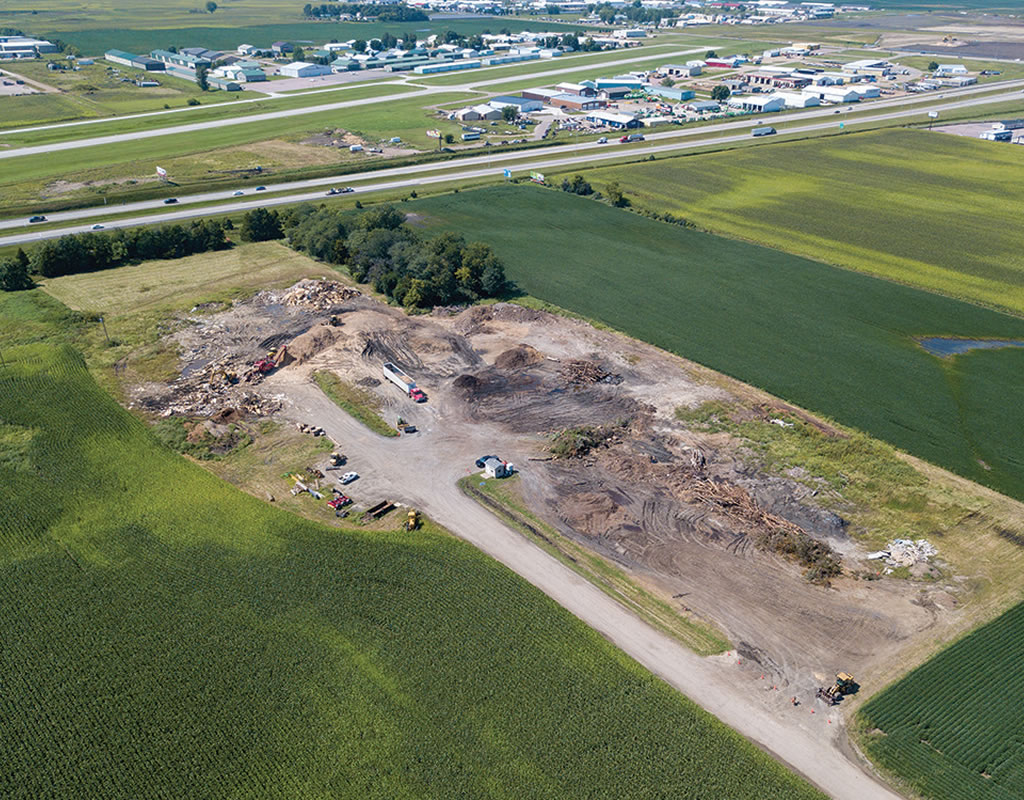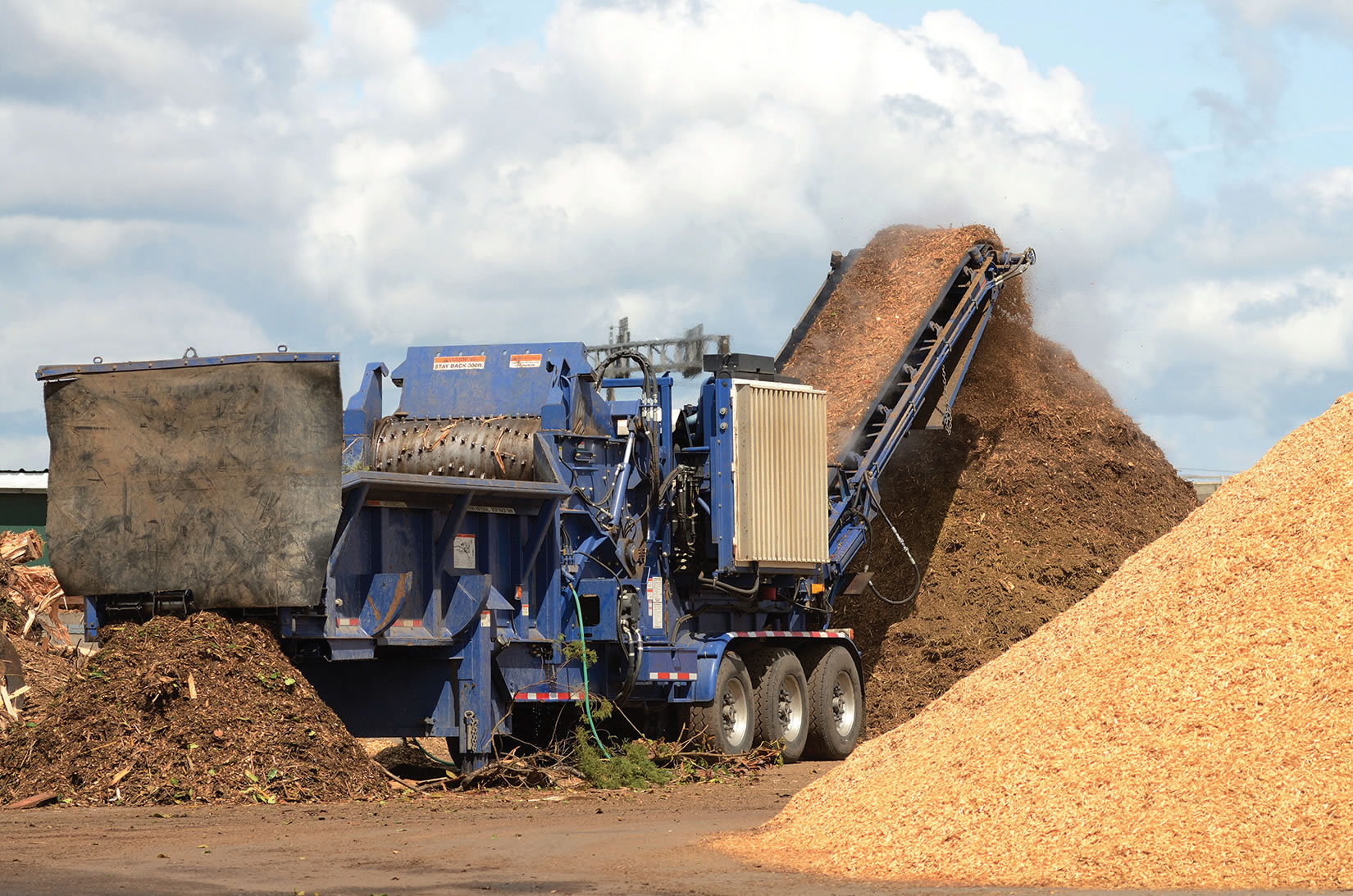By Ken McEntee
“Good luck. Tell us how you do.” Robert Smith, chief of operations for the North Collier (County, Florida) Fire and Rescue District, said he heard that line a lot as he called fire departments around the country for advice about fighting a massive mulch and compost fire at the end of April. The blaze – the second in less than a year at Environmental Turnkey Solutions (ETS) – was identified in one local media report as the largest mulch fire ever in the U.S.
Maybe such a claim can’t be substantiated. But Smith doesn’t doubt it.
“I called all around the country to find somebody with advice to help us fight it and nobody could come close to the magnitude that we were dealing with,” he said.
The fire, which started on Friday, April 28, was still smoldering as this article was being written in early June. Its cause was being investigated.
Without much guidance to follow, firefighters were left to improvise tactics to mitigate a fire that encompassed nearly all of what has been described as a five-acre site, although it is a part of a parcel that exceeds 600 acres. The fire consumed a huge mass of wood and organic waste that Smith described as 850 by 900 feet, and 70 feet high. As the smoldering appeared to be near its end, Smith said he was preparing a presentation about the tactics his department used to mitigate the fire. The presentation, he said, will be shared to help other departments across the country deal with mulch pile fires.
Smith also shared some recommendations to help mulching and composting operations reduce their risk of fires:
- Limit the size of the piles.
- Break the piles up and keep enough space between them for fire and other equipment to easily reach them
- Set up a sprinkler system that can reach each pile.
- Monitor the temperatures on a daily basis and turn the piles – especially when they reach a certain temperature.
Robert LaGasse, executive director of the Mulch and Soil Council, said those recommendations are generally consistent with the industry’s best practices.
“We recommend that you monitor pile temperatures and turn a pile any time it reaches 170 degrees or more,” LaGasse said. “It is a common practice. We just did a survey of our members and most people re-stack the piles when the temperature goes above 170 degrees, typically measured by a probe six feet into the pile.”
He also recommends that piles should be no higher than 20 to 30 feet high and no longer than 100 to 200 feet. A 70-foot high pile, he said, is “absurd.”
Although LaGasse said monitoring pile temperatures is an inexpensive and common sense practice, he said survey results show that mulching facilities that do not monitor temperatures don’t appear to have shown a higher propensity to have a fire.
“In general the operations that don’t monitor temperature keep their piles small,” he said. “There are different theories about whether you should pack the piles tight or keep them loose.”
Apparently, most, or all Smith’s recommended precautions were not being practiced by ETS before the April fire, he said. In fact, he said, following a previous fire in July 2016, the company agreed to install a sprinkler system. The system was not in place when firefighters showed up on April 28, Smith said.
“I don’t know whether they were turning the piles,” he said. “But they were so large I don’t know how they could have turned them. They stated that the material wasn’t going to be there long enough for them to turn it because they turned it around so quickly. But they got too much too soon.”
Anthony Cialone, president of ETS, did not respond to a phone call before this article was published.
Dry and windy
The April fire at ETS started during a time when Florida firefighters already were busy with multiple wildfires that promoted Gov. Rick Scott to declare a state of emergency.
“We are in an extreme drought right now,” Smith said. “We had really high surface temperatures and very low humidity. When we arrived it was also very windy, which helped to spread the fire. It grew so rapidly that it was impossible to fight.”
ETA is a compost producer that owns the trademarks on at least two brands - Old Florida Compost and Soil Rescue. The company participates in the U.S. Composting Council’s Seal of Testing Assurance program, which certifies that products are laboratory tested for quality.
ETA’s facility, in Naples, takes in about 70 percent of all of the discarded organic material in Collier County, according to Smith.
“The facility takes away all the county’s land clearing,” he said. “There is so much growth in Collier County that they don’t have enough room to store all of this stuff. They are constantly getting more and more and there was a huge volume of debris on site.”
The size of the fire, even as firefighters arrived, made mitigation efforts futile.
“We tried to use water shuttles and a bunch of brush trucks,” Smith said. “We brought in 10 or 12 water tankers. We set up aerial ladders all around the pile to put water on it but we quickly found out that it was not going to be even remotely close to the volume of water we needed to put on the fire.”
During the facility’s fire last July, firefighters decided to let it burn itself out.
“It burned for four or five weeks and it put out a lot of black smoke the whole time,” he said. “Embers and small particles would fly around and could possibly start fires elsewhere. So this time we had the idea of advancing it by setting it all on fire at one time. When we back-burned it, it burned up all of the smaller materials, so in the weeks after that there wasn’t a lot of heat being produced. It was only smoke. The idea was if we burned it all at once, then we could come back and worry about turning the piles later.”
The next step, Smith said was to water down the massive pile in small sections.
Fortunately, the site is adjacent to a quarrying operation with a large lake. A moat, about 10 feet wide, was dug around the perimeter of the burning pile and filled with water from the lake.
“We had them (ETI) get those big Rain Bird water guns that shoot 200 gallons per minute,” he said. “It was not nearly enough, so they had to go in with bulldozers and cranes and pick the material up in sections and wet it down and then move on. Every day they would get maybe an eighth of an acre done.”
The moat – an idea the department had used before in other fires – had another use.
“What happens when you surround the pile with water, is that the water gets sucked into the pile and cools it from the bottom,” he said.
For nearly a week, firefighters from the North Collier Fire Department, with mutual aid from Lee and Hendry counties, were on site with their equipment, Smith said.
“After that, we couldn’t do it any more,” he said. “We weren’t able to have so many of our resources tie up in one place with other things going on. So we basically shut them down for business and managed the situation, but we made them use their own equipment and their own operators. We had them bring in more sprinkler heads, bulldozers and other equipment. It was a 24/7 operation. We turned and watered down a small section at a time. We haven’t turned the site back over to them. We still have operational control of the site. We kept a vehicle there 24/7 to make sure they were complying with what we told them to do.”
Taxing the resources
Collier County is Florida’s largest county by land area, and is one of the most rapidly growing areas in the state. The county’s population grew from 86,000 in 1980, to 251,000 in 2000 and now sits at around 360,000. The county has more than 20 fire stations, 10 of which are part of the North Collier Fire Department. The department has 192 firefighters. During the opening stages of the ETS fire as many as 30 firefighters were on the site, Smith said.
“It really did tax our resources,” he said. “We committed a lot of our resources there. We paid overtime and had extra trucks tied up, and it was right in the middle of our wildfire season. At the same time, we were inundated every day with numerous phone calls about smoke from the surrounding areas. We knew where the smoke was coming from, but you still have to send a truck to each complaint.”
Asked whether it is annoying to dedicate so many resources, for so long, to a single site, for the second time in less than a year, Smith described the situation as “challenging.”
The costs to county taxpayers, he said, hadn’t been calculated. However he said, the costs will be recovered from ETS.
Lack of compliance?
ETS also could be subject to fines.
Smith said he could not say whether negligence or any violations were involved in the fire.
“The cause is under investigation through different departments in the county,” he said. “The code enforcement office is looking into it and the (Florida) Department of Environmental Protection (DEP) is investigating it. At this point we’re just trying to mitigate it. Then the other agencies will investigate any wrongdoing.”
An environmental manager at DEP’s South District was unable to elaborate on any investigations relating to ETS in time to be included in this article.
Smith said the pile at ETS was 70 feet tall.
According to Connie Deane, community liaison for Collier County, mulch pile size rules are set by the National Fire Protection Association (NFPA). Those rules consider whether or not piles are protected by a fixed fire extinguishing system.
When not protected by a fixed fire extinguishing system, piles are not to exceed 25 feet in height, 150 feet in width and 250 feet in length, according to the rules.
According to Smith, ETS agreed after the July 2016 fire to have water sprinklers on site. He said they were not on site when firefighters arrived at the April 2017 fire.
“After the first fire they did not cooperate,” he said. “After the first fire we gave them directions and they did not comply. For example, we said you need these sprinklers on site in case it happens again. When we got to the second fire we asked, ‘Where are the sprinklers?’ They said they weren’t there. But during the second fire they were very compliant and helpful in mitigating the fire. They lost a lot of inventory. They lost a lot of money on it.”
Will it happen again?
Smith said he is confident this time that measures are in place to prevent another fire.
“Part of our operational plan for this facility was to fight the fire and also to put in place fire prevention measures for what they have on site and for the future,” he said. “Part of the plan was for them to show us that this was not going to happen again. Which they did. They brought in extra pumps and high gallon sprinklers that are protecting their inventory now and, in addition, they fly over with their drone. The plan is for them to monitor surface temperatures, and if they reach a certain temperature to put their sprinklers on the piles to prevent it them from starting on fire.”
Smith didn’t express complete confidence that the plan will work, however.
“They have a plan in place that conforms to what we think they need to do,” he said. “But with the extreme weather he have had this year, I don’t have a lot of confidence in anything. During the last several months we have seen wildfires like we have never seen before.”
Smith thinks the tactics his department uses to put control the fire are applicable to other mulch and compost operations.
“We have been documenting everything, including flying drones overhead so we can share what we did with other fire departments,” he said. “
Related News
Subscribe Today
Every other month, Soil & Mulch Producer
News brings you important stories about:
• New Technology
• Products
• Industry News
• Research Studies
Soil & Mulch Producer News features articles and services relevant to your daily operations.


